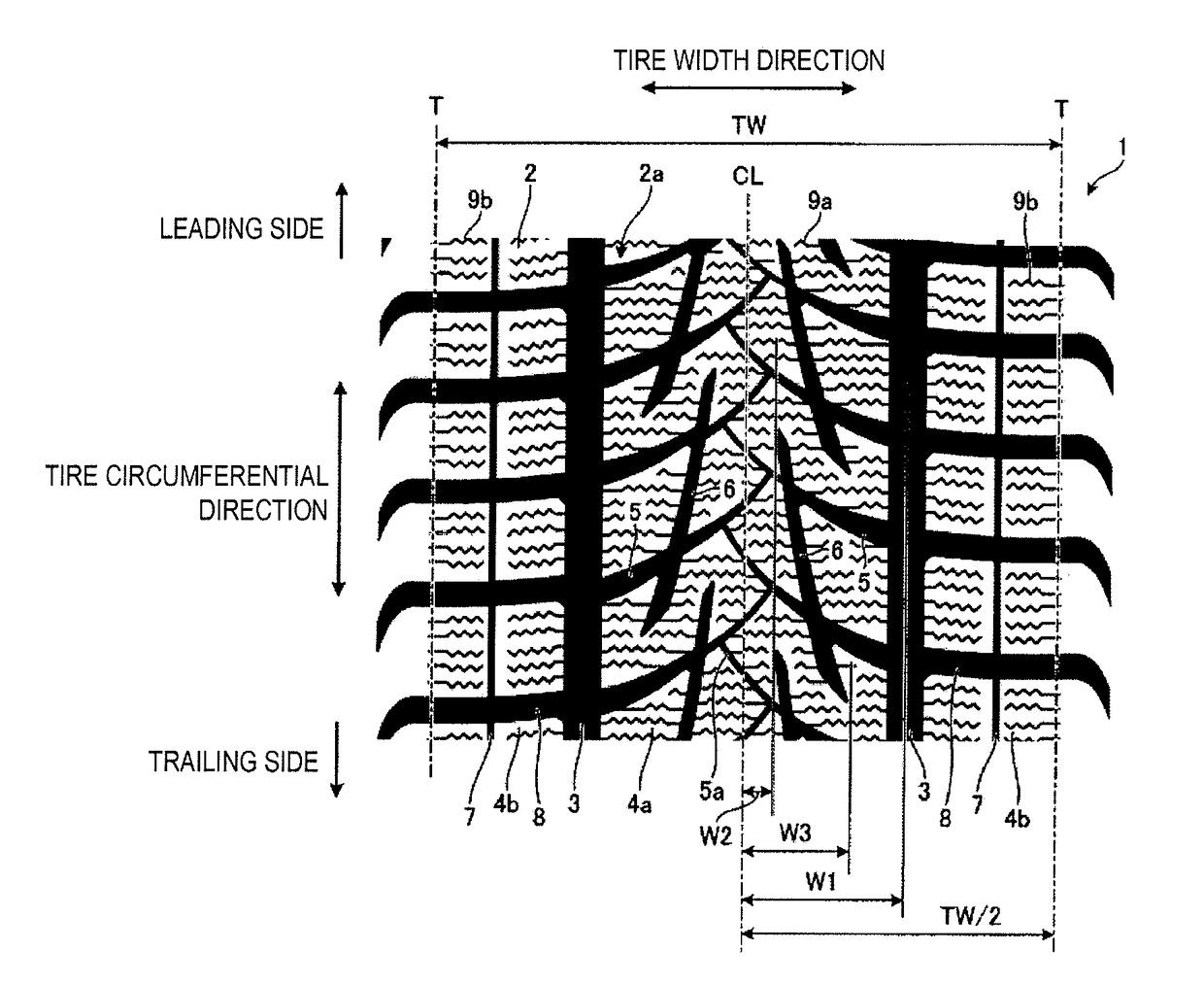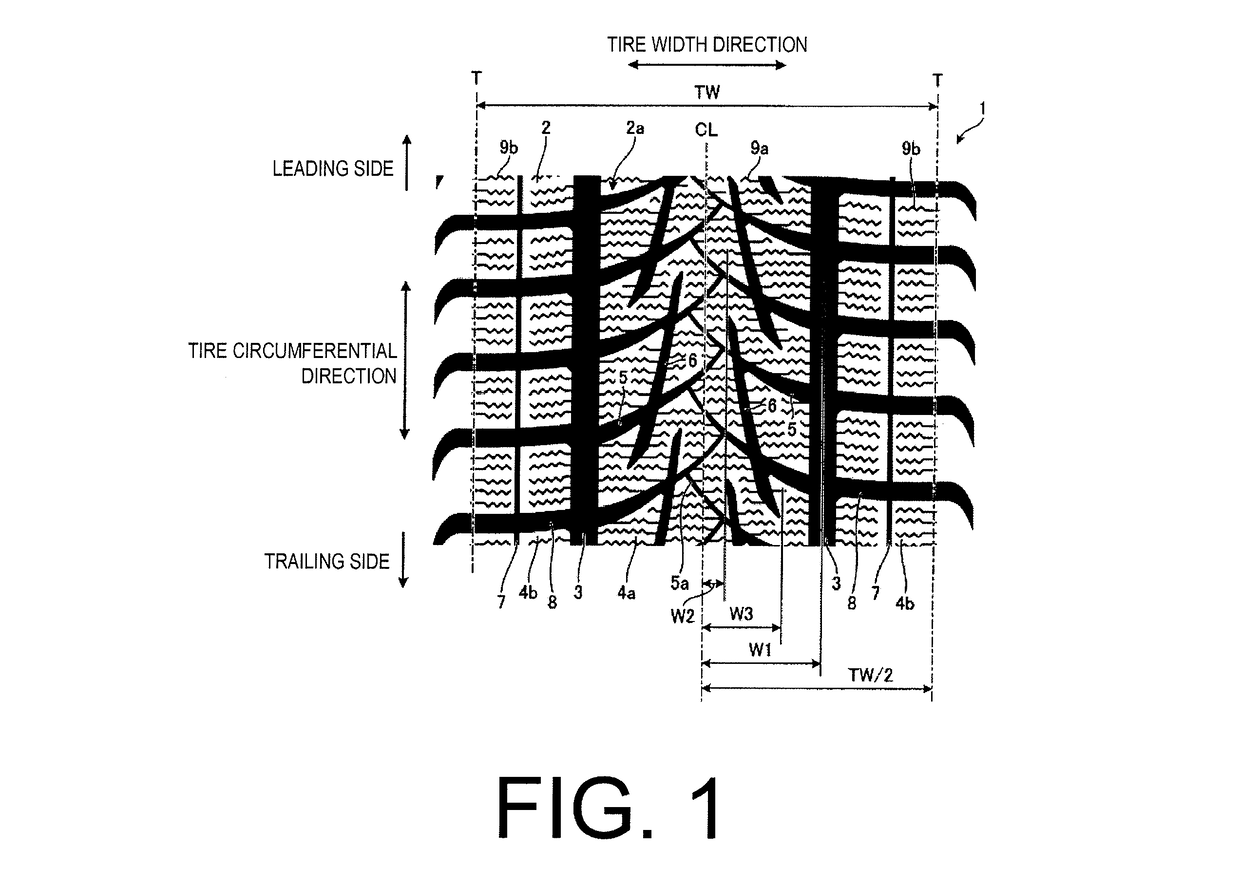Pneumatic tire
a technology of pneumatic tires and pneumatic cylinders, which is applied in the direction of non-skid devices, vehicle components, transportation and packaging, etc., can solve the problems of reduced steering stability on wet road surfaces, increased risk of water discharge, and reduced steering stability on dry road surfaces, so as to improve steering stability on snow-covered road surfaces, maintain the stiffness of the shoulder ribs, and improve the effect of steering stability
- Summary
- Abstract
- Description
- Claims
- Application Information
AI Technical Summary
Benefits of technology
Problems solved by technology
Method used
Image
Examples
working examples
[0065]In the working examples, performance testings for steering stability on dry, wet and snow-covered road surfaces were performed on a plurality of types of pneumatic tires under different conditions (see FIG. 3).
[0066]The performance testing for steering stability included assembling pneumatic tires having a tire size of 255 / 40 R19 on regular rims (a “standard rim” defined by the Japan Automobile Tyre Manufacturers Association Inc. (JATMA), a “Design Rim” defined by the Tire and Rim Association, Inc. (TRA), or a “Measuring Rim” defined by the European Tyre and Rim Technical Organisation (ETRTO)). The pneumatic tires were inflated to an air pressure of 250 [kPa] and mounted on a test vehicle (3.0 liter class four-wheel drive sedan).
[0067]In the evaluation method of steering stability on a dry road surface, a sensory evaluation of initial response by a driver when the test vehicle changed traveling lanes while traveling on a straight test course on a dry road surface at 200 [km / h]...
PUM
 Login to View More
Login to View More Abstract
Description
Claims
Application Information
 Login to View More
Login to View More - R&D
- Intellectual Property
- Life Sciences
- Materials
- Tech Scout
- Unparalleled Data Quality
- Higher Quality Content
- 60% Fewer Hallucinations
Browse by: Latest US Patents, China's latest patents, Technical Efficacy Thesaurus, Application Domain, Technology Topic, Popular Technical Reports.
© 2025 PatSnap. All rights reserved.Legal|Privacy policy|Modern Slavery Act Transparency Statement|Sitemap|About US| Contact US: help@patsnap.com



